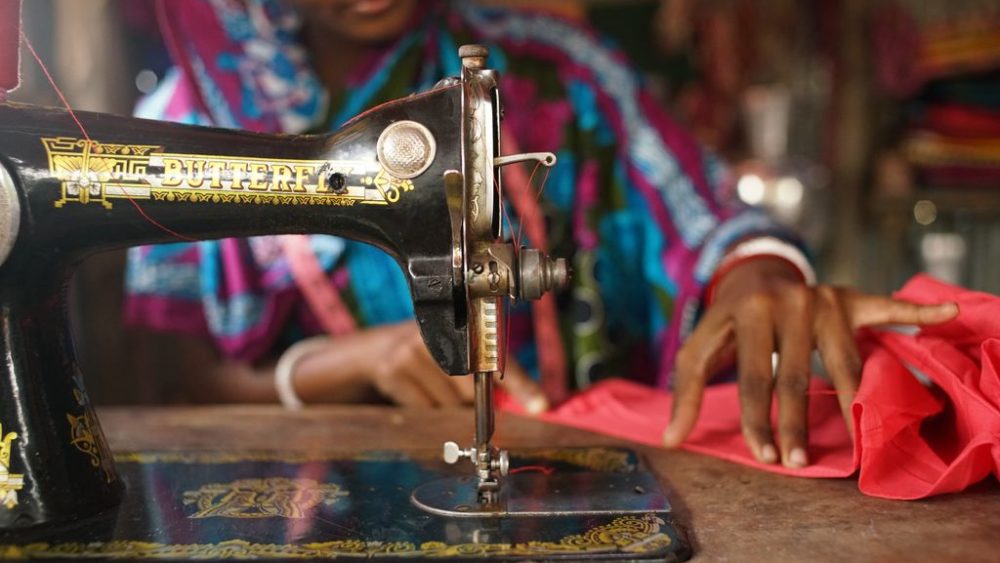Companies named and shamed in ethical fashion report
This year’s scorecard on Aussie brands
Mainstream fashion chain Decjuba is one of a handful of Australian retailers that still refuse to supply information about conditions in their factories and supply chains for the annual Ethical Fashion Report, called Behind the Barcode, compiled and published by Baptist World Aid.
The 2019 report – its sixth – assesses more than 400 fashion brands, with a median grade of C+.
Decjuba, which has 100 stores across Australia and New Zealand, scored the lowest ranking of F last year but managed to climb to a D this year thanks to the limited amount of information it published online.
Behind the Barcode’s project leader Jasmin Mawson said other brands that failed to respond to requests for information were Lowes and Ally Fashion, which both earned an F.
New Zealand fashion designer Karen Walker was also non-responsive, but the brand earned a B- on the basis of encouraging publicly available information.
“There’s been a big change in the scale but also in the number that engage directly with it.” – John Hickey
The star performers among Australian-owned brands were Cotton On, Kookai and Country Road – all large mainstream retailers – which achieved A-. However, the favoured jeans brand of the Duchess of Sussex, Outland Denim, which was set up specifically as an ethical company, achieved an A+.
“When we first came out in 2013, most of the corporates were going ‘who is this organisation Baptist World Aid?’, so we probably had less than 30 per cent of the companies engaged directly with us on our request for survey information,” Baptist World Aid CEO John Hickey told Eternity.
“Whereas this year, we were up to over three-quarters of the companies but a hugely expanded run of companies and brands, so we now have 130 companies and over 430 brands that we’re assessing through the report. So there’s been a big change in the scale but also in the number that engage directly with it.”
Baptist World Aid describes Behind the Barcode as a “best-in-class assessment of fashion supply chains, revealing the impact of corporations on the world’s poor and empowering consumers to hold them accountable.”
“In 2013 barely any companies were talking about living wage.” – John Hickey
Hickey said typically between 25,000 and 35,000 people download the fashion guide each year. This year, it will be available on new app, called End Poverty, launched to celebrate Baptist World Aid’s 60th anniversary.
While Hickey said there is still a long way to go to protect workers in poor countries, corporates acknowledge Behind the Barcode as the most significant single driver of Australia’s progress on labour rights.
“In 2013 barely any companies were talking about living wage, which was one of our key things. We’ve still got a long way to go, but companies are talking about it now.”
“They’re researching much better what’s going on – now they need to act on it.” – John Hickey
He said 48 per cent of companies in the report had started to develop a living wage methodology, which was a huge change, while 24 per cent were publishing some kind of commitment to pay living wages.
“The percentage of actual living wages is still very low, but at least you can see the trend there, which is really exciting … So they’re researching much better what’s going on – now they need to act on it.”
While there had been many changes in metrics over the years, Hickey said some of the most dramatic shifts were registered from last year to this year.
“We’ve really worked hard to get them to think about looking at the whole supply chain, not just a part that’s most visible to you.” – John Hickey
“Last year, we’ve seen 32 per cent more companies tracing the inputs of suppliers, 31 per cent more companies are tracing raw materials suppliers. That’s a huge shift because often companies would look one step back in the supply chain and not go much further, but clearly the supply chain starts with the production of the raw materials, then there’s the basic milling, then there’s a garment manufacturer, and so on,” he said.
“We’ve really worked hard to get them to think about looking at the whole supply chain, not just a part that’s most visible to you, and think responsibly about that.”
This year, for the first time, a set of measurement criteria around environmental impact in the supply chain was incorporated into the final scores the companies received.
“That’s a whole area that we want to focus on now with companies. Because … often bad environmental impact has a clear line of affecting the vulnerability of people living around the production place,” he explained.
“There’s a statistic that one T-shirt can take up to 2500 litres of water to produce, so it’s a huge amount of water that is used for a start, but secondly what we also know is that with manufacturing processes you get polluted water … and also air pollution. So we’re really conscious of trying to shift the major players to think about not just the day-to-day work environment but the whole environment that people in the supply chain are enduring based on the manufacturing practices.”
“We’re not expecting spectacular change, but it’s a journey and you see positive change over time.” – John Hickey
Hickey stressed that as well as calling out perceived lack of attentiveness to vulnerable people in supply chains, the report also wanted to applaud change and “collaborate with the industry towards change rather than just stand apart and wag the finger at them.”
He said the Modern Slavery Act, passed in federal parliament earlier this year, would provide further impetus to change because it “brings a legislative bite, particularly for larger companies, to comply with transparency and being able to demonstrate that there’s no slave labour and child labour in the supply chain.
“So I think what we’ll see is potentially a continuing improvement in standards. But it’s a process – we’re not expecting spectacular change, but it’s a journey and you see positive change over time.”
“Only 8 per cent of companies could demonstrate the presence of trade unions.” – John Hickey
The area where improvement was most needed was environmental grading, which was at the stage that consideration of a living wage was in 2013.
He would also like to see improvements in worker empowerment, which was the lowest graded section of the 2019 report, with a median grade of D.
“Only 8 per cent of companies could demonstrate the presence of trade unions or collective bargaining agreements in all of their factories, and 21 per cent could demonstrate the presence in the majority of factories, so we think that is a low percentage.
“We’re aiming for a respectful balance – we would not have a strong economy without good business generating employment, but at the same time there needs to be a sense of being reasonable and there is a need to have a collective approach.”
Email This Story
Why not send this to a friend?


